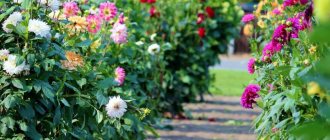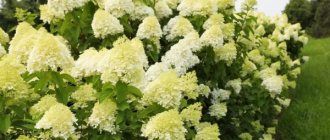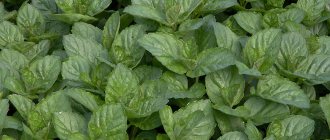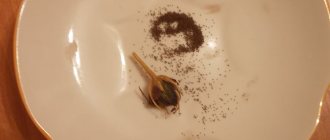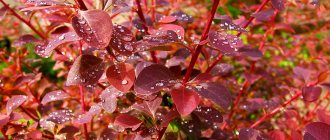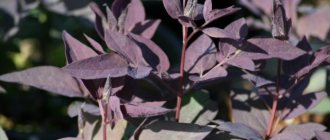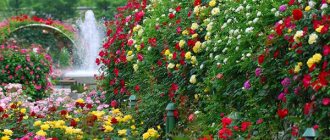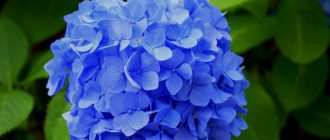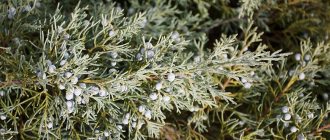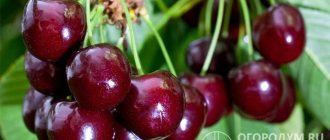Don't know how to decorate your site? Plant the best varieties of paniculata hydrangea. These luxurious plants with a huge number of beautiful varieties will not leave anyone indifferent. Gorgeous paniculate inflorescences up to 25 cm long in the shape of a wide pyramid consist of small and large flowers.
The main feature of flowering hydrangea is its ability to gradually change its color depending on the composition of the soil.
For your attention – our Top 15 beautiful varieties of paniculate hydrangea, which will feel great in the middle zone, for example, in the Moscow region. Photos and descriptions of varieties are accompanied by tips on care and recommendations for growing.
Bobo
The dwarf variety Bobo received the “Best Variety” award at a flower exhibition in Belgium in 2011. During the abundant and long flowering of this hydrangea, the color of its petals changes from white-yellow to soft pink.
Due to its low growth, Bobo hydrangea is suitable for growing in containers that can be placed on a balcony or summer terrace. It is advisable that this be a semi-shaded place, since in the bright sun the hydrangea inflorescences become smaller. It is important that the bush is protected from gusty winds.
| Purpose | Bush height (cm) | Bush width (cm) | Flowering period | Peculiarities |
| 70 | 50 | From July to September | Plant winter-hardy, but the roots young bushes needed for winter mulch | |
Botanical description
Hydrangea paniculata is a shrub or tree up to 10 m high with shallow roots, the distribution area of which significantly exceeds the projection of the crown. The leaves of Hydrangea paniculata are ovoid or elliptical, up to 12 cm long. Honey-bearing inflorescences are densely hairy, wide-pyramidal panicles up to 25 cm long and consist of large sterile flowers with a diameter of up to 2.5 cm, the greenish-white petals of which gradually turn pink, and small fertile white flowers with early falling petals. Hydrangea paniculata blooms for the first time at the age of 4-5 years. The fruit is a capsule that cracks at the top when ripe and contains numerous small but extremely viable seeds.
Phantom
The variety is highly valued for its lush flowering and the unique honey aroma that the beautiful flowers emit. In summer, the inflorescences are light cream, and by autumn they become pinkish, while their tops turn yellow. The petals of this plant are slightly different from other hydrangeas: they are slightly elongated and are not located so closely to each other.
| Purpose | Bush height (cm) | Bush width (cm) | Flowering period | Peculiarities |
| 200 | 200 | From July to September | In the middle lane young plants may freeze so their cover layer of mulch | |
Planting paniculate hydrangea in open ground
When to plant
The best planting material is four to five year old seedlings that take root well and can bloom within the year of planting. Hydrangea paniculata is planted in the spring, before the sap begins to flow, or during leaf fall. Seedlings planted in the spring will almost certainly bloom soon, but if planting is carried out in the fall, it is necessary to insulate the tree trunk for the winter.
Hydrangea paniculata can grow in partial shade, but in bright sun its flowering will be longer and more lush. It is very important that the plant is protected from strong cold winds.
- Vermiculite: what are its benefits and what are the ways to use it in the garden and floriculture
Growing hydrangea in the garden - planting and care
Hydrangea paniculata prefers soil that is fertile, neutral, without any traces of lime or other alkaline compounds, due to which it may, at best, bloom poorly, and at worst, simply die. Keep in mind that the plant's roots extend far from the trunk, so do not add chalk, dolomite flour or ash to the soil within a diameter of 5-6 m from the intended planting site. Do not plant bulbous flowers in this space that require annual digging of the soil - tulips, gladioli, hyacinths. Brown peat, pine soil or sawdust can be added to acidic soil to neutralize it. Hydrangea paniculata grows poorly in sandy soil.
How to plant
The landing site is prepared in advance. The pit for paniculata hydrangea should be spacious: depending on the size of the seedling, from 50x50 to 80x80 cm with a depth of 40 to 60 cm. The distance between two hydrangeas or between the hydrangea and other plants should be 2.5-3 m. Fill the hole with 2- 3 buckets of water so that the moisture saturates the ground well. The next day, fill the hole almost to the top with a mixture of fertile soil, sand, peat and humus (2: 1: 2: 1), adding 25 g of urea and potassium sulfate and 65 g of superphosphate to it and mixing thoroughly. Allow the soil to settle and settle.
The roots of seedlings are slightly pruned before planting, and in tree-like forms of paniculata hydrangea, annual shoots are also shortened, leaving no more than 3-5 buds on them. Only large-leaved hydrangea seedlings are not pruned, since the flower buds of this plant are located at the ends of the shoots.
Lower the root system of the seedling into the hole, straighten its roots and dig the plant so that the root collar is slightly above the surface of the area. Water the seedling well, and when the water is absorbed and the soil settles a little, the neck will be where it belongs - at the level of the surface of the site. Mulch the tree trunk of the seedling with pine needles, leaf humus or acidic peat and at first shade the plant from the bright sun.
Pest and disease control
Paniculate hydrangeas practically do not get sick, and most problems arise only from improper care. These are sunburn, poor soil, lack of minerals or improper watering. Leaves dry out, curl or turn black due to sudden changes in temperature or humidity.
Among fungal diseases, hydrangea is affected by powdery mildew, white and gray rot, rust and septoria. Control methods are always approximately the same - remove damaged areas and treat the bush with fungicides. Ring spot is a dangerous virus that prevents flowering and leads to the death of the plant, and the main measure to combat it is prevention.
You must first get rid of leaf aphids mechanically by washing the bush with water or soapy water. It is more effective to combat spider mites immediately with insecticides, but slugs will have to be collected manually. The most dangerous enemy is the nematode, which is almost impossible to remove, so it must be prevented.
Photo: 101-rose.ru
Transfer
Adult hydrangeas are transplanted at the same time as young seedlings - in early spring. Choose a place in advance and start transferring:
- Dig a planting hole 50x50x50 cm.
- In the old place, do not rush to dig up the bush right away. Water it thoroughly. Hydrangea is transported together with a lump of earth - it must be moist so that it does not crumble.
- Carefully dig up the bush from all sides at a distance of 20–25 cm.
- Transfer it to the planting hole.
- Fill with soil so that the root collar is at the boundary between soil and air. Press the soil down slightly with your hands.
- Water the hydrangea. If the soil settles, add more into the hole.
Then water as usual - twice a week. In the first three weeks, it is better to make a canopy so that the bush is shaded. After a month, the hydrangea can be fed.

